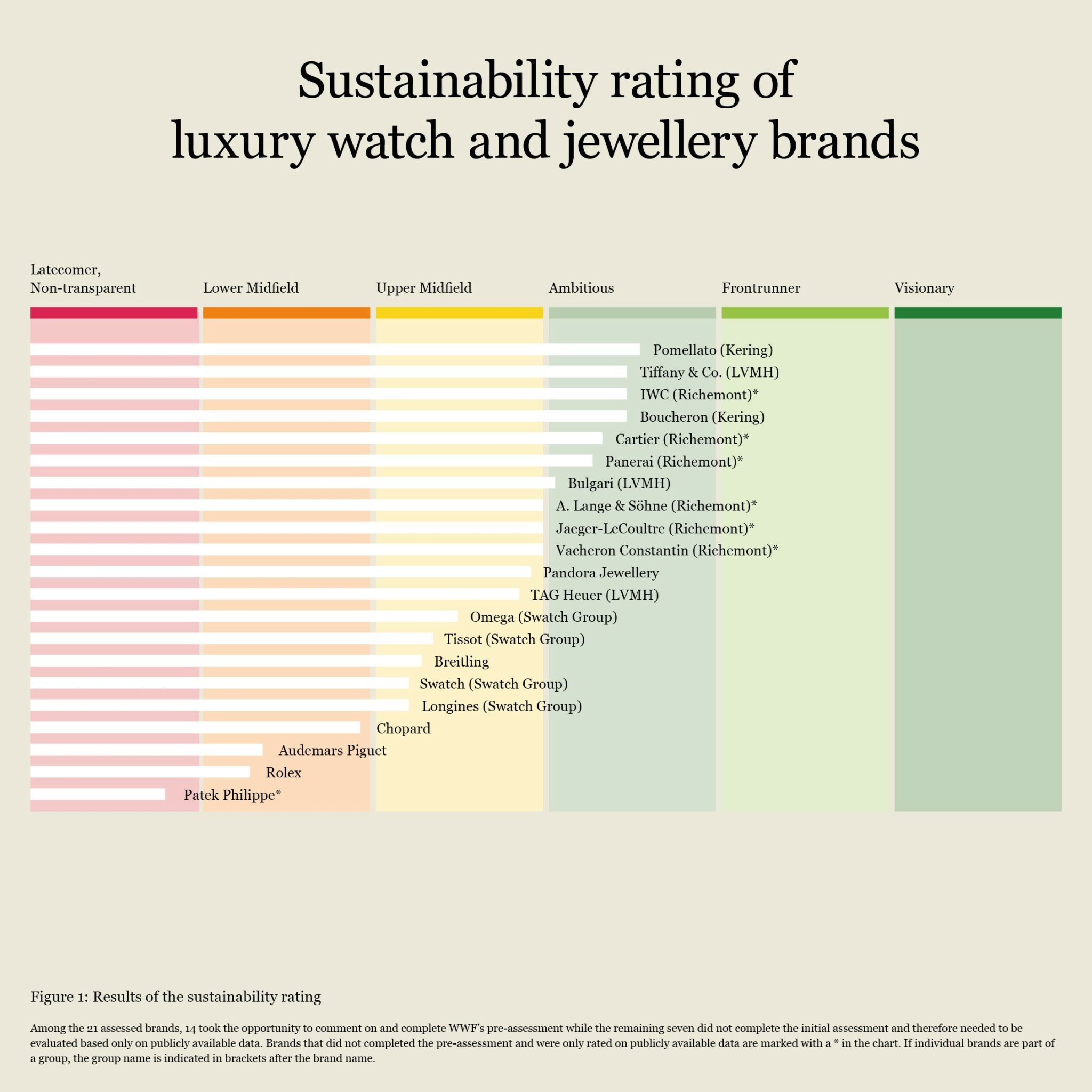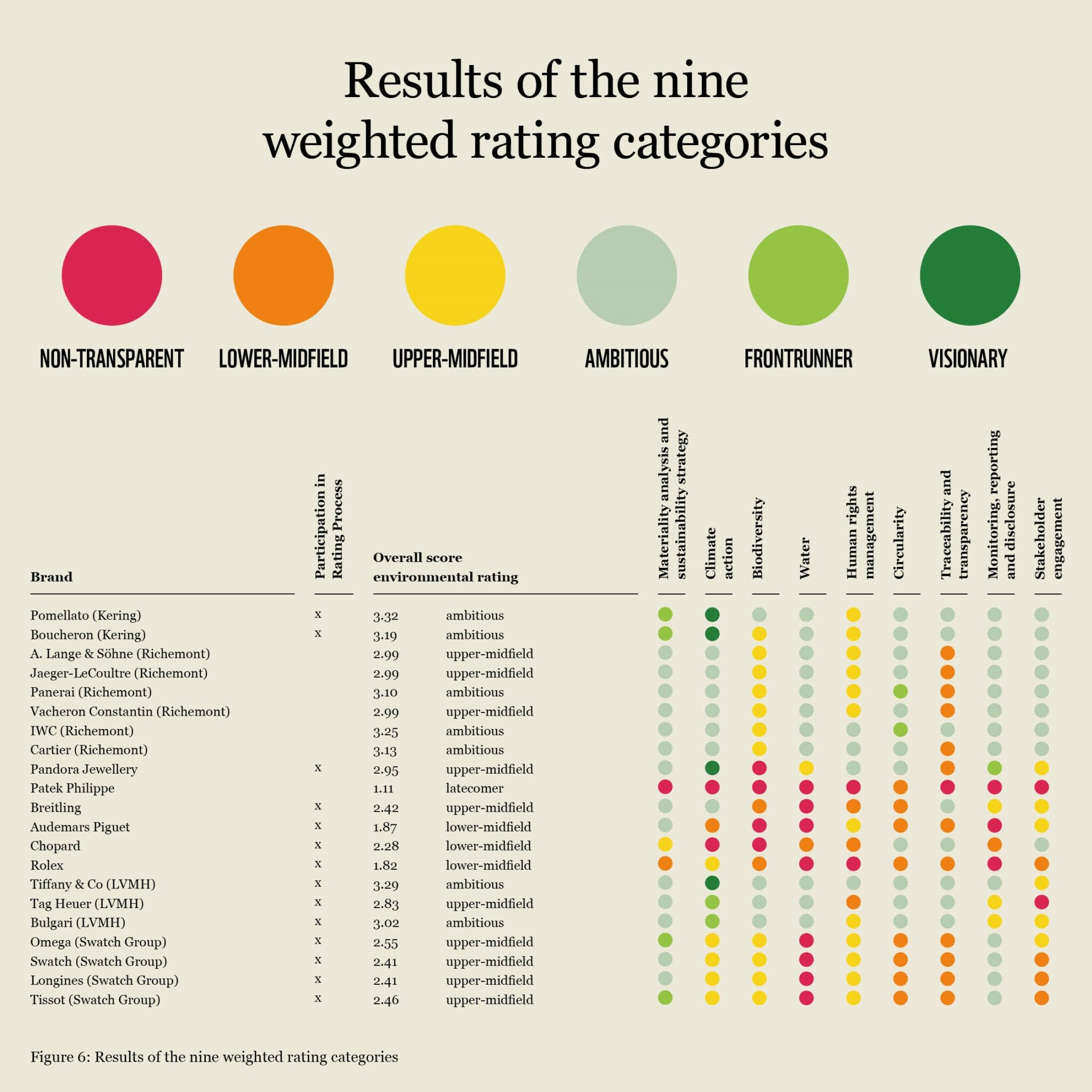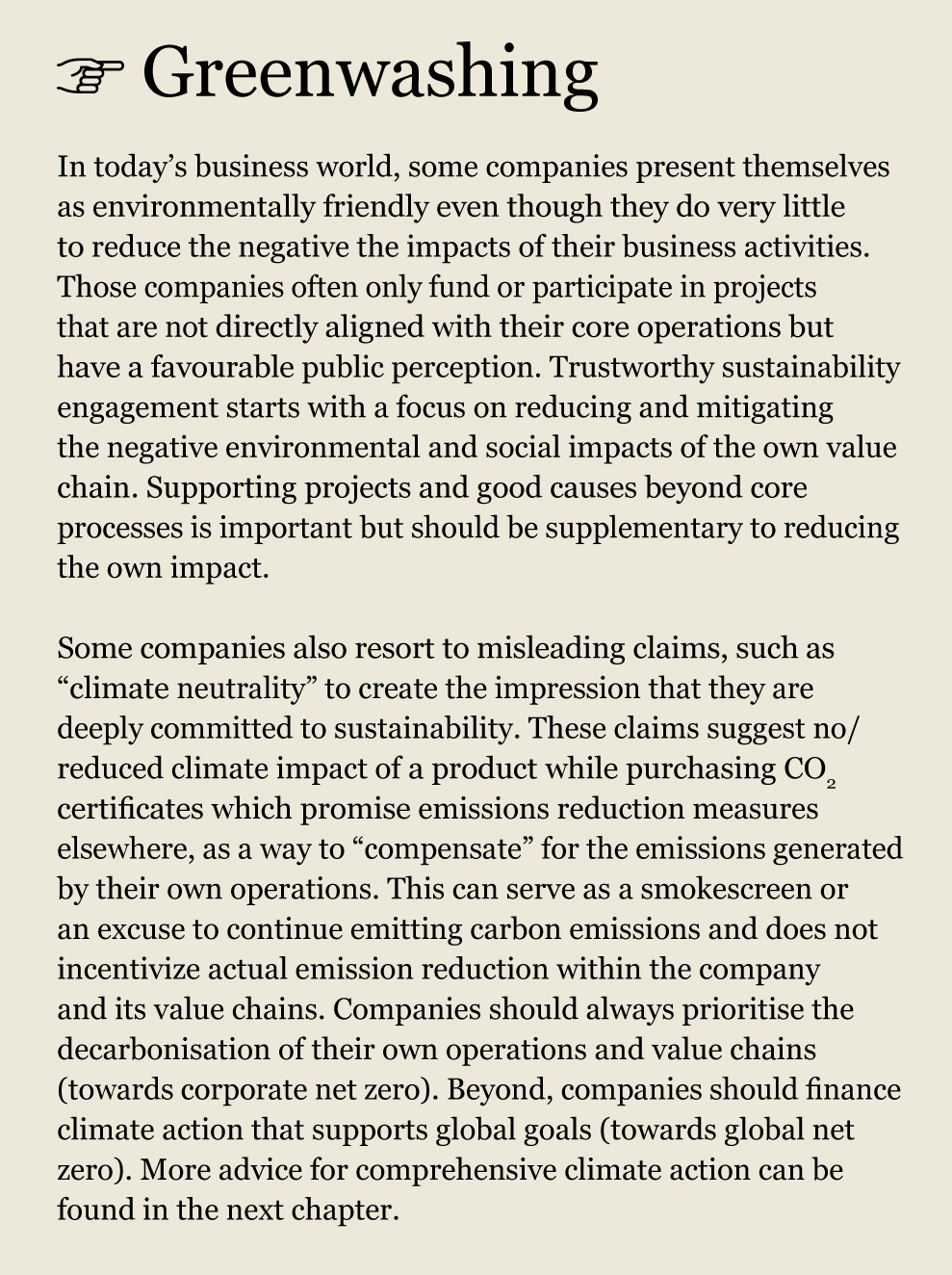Patek Philippe, Rolex, Audemars Piguet and Chopard have come bottom in a jewellery and watch brand sustainability study by the WWF (World Wide Fund for Nature).
WWF, a non-governmental organisation that works in the field of wilderness preservation and the reduction of human impact on the environment, is based in Switzerland, but did not pull any punches on its assessment on how some of the country’s biggest brands have conducted themselves when it comes to transparency and sustainability.
The report focuses on the supply chain of jewellery and watch brands, particularly the source of precious metals, and appears to have been stonewalled by the big three privately owned watch businesses when it comes to transparency over the provenance of its materials.
“WWF’s purpose in this report is to challenge the luxury watch and jewellery industry and
demand more transparency regarding not only the origin, but also the sourcing of the precious metals used by the world’s most important houses,” says Sandra Valenzuela de Narvaez, CEO WWF Colombia, in a foreword to the report.
“Current mining activities pose major challenges for nature and local communities. They should therefore be tracked, understood, informed, documented, and analysed. While mostly not involved in the extraction of the precious metals themselves, watch and jewellery brands hold tremendous power to transform the status quo and support the formation of fairer, more transparent, and responsible value chains,” she adds.
Stakes are high, according to WWF, which says growing demand for luxury watches and jewellery around the world is leading to practices like illegal gold mining, which is said to be one of the main drivers of deforestation, soil erosion, contamination of water and air as well as health issues and threats to indigenous communities.
The new study revisits issues first raised in a 2018 WWF report, which looked into the 15 biggest Swiss industry players to assess how well prepared luxury watch and jewellery manufacturers were for the challenges ahead, how far they could trace their supply chain and how they worked with their suppliers and business partners to protect the environment and people.
That report came to the conclusion that only a few brands were able to trace their parts of their supply chain and had taken sufficient measures to prevent, reduce or mitigate risks of negative impacts on the environment.
Fast-forward five years and the same research has found improvement from the publicly-traded groups with the brands of Kering, such as Pomellato and Boucheron; Richemont, with A. Lange & Söhne, Cartier, IWC, Jaeger-LeCoultre, Vacheron Constantin and Panerai; and LVMH, including Tiffany & Co., TAG Heuer and Bulgari, have benefitted from sustainability efforts at the group level.
They are also significantly more transparent and open about their sustainability goals and achievements than privately owned Patek Philippe, Rolex, Audemars Piguet and Chopard, which came bottom of a league table of luxury watch and jewellery brands.
 A lack of transparency appears to be the greatest contributor to the failure of Switzerland’s biggest watchmakers to climb the WWF rankings.
A lack of transparency appears to be the greatest contributor to the failure of Switzerland’s biggest watchmakers to climb the WWF rankings.
“there is still a great need for further development towards more supply chain traceability and transparency in the industry — two crucial prerequisites for meeting and reporting on all other sustainability targets,” the WWF report states.
“The industry’s performance regarding stakeholder engagement is currently rather limited: Most companies are not yet engaging their suppliers, employees, and consumers in a targeted and comprehensive way in their sustainability efforts. Many companies in the sector are still at the very beginning in the areas of water, biodiversity, human rights stewardship, as well as the implementation of circular approaches,” it continues.
WWF says the watch and jewellery sector contributes to climate change, environmental destruction, deterioration of water resources, and biodiversity loss through extraction of non-renewable raw materials like precious metals and involves deforestation and emissions to air, soil and water.
However, about 85% of green house gasses for the luxury watch and jewelry industry are indirect emissions that are not linked to manufacturing.
Today’s consumers are far more demanding when it comes to transparency and sustainability, the WWF believes.
“The watch and jewellery sector is in the midst of a transformative movement as consumers increasingly take the reins and push for more sustainability in the product range,” the report states.
“Estimates predict that, by 2025, approximately 20 to 30% of worldwide jewelry sales will be influenced by the buying behaviour of environmentally conscious customers (BOF and McKinsey 2021). Consumers’ growing awareness of sustainability is leading them to increasingly question the practices of the brands they support and demand more transparency in all areas of business operations. Conventional marketing with unsubstantial claims fails to meet their need for genuine insight into the inner workings of
these businesses,” it concludes.




Who cares? Seriously. What matters is how good their products are. The new Panerai elab which is claimed to be made from recycled and environmentally friendly material is absolute junk.